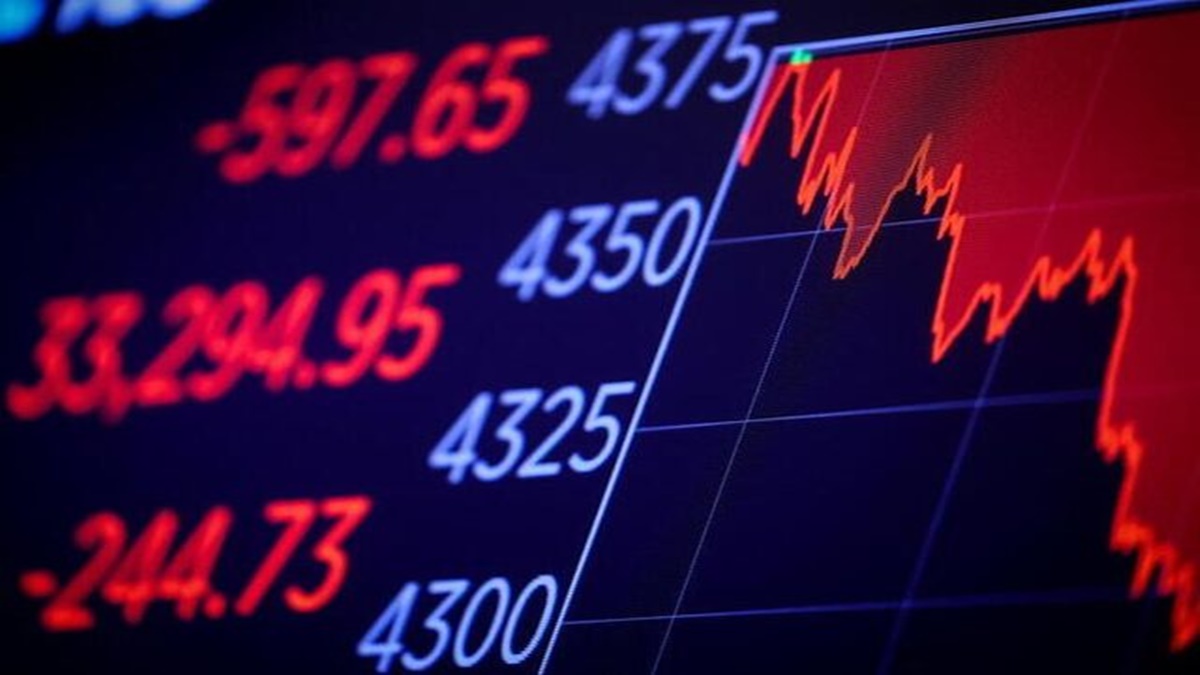Wall Street experienced a significant downturn for the second consecutive day on Friday, as fresh tariffs imposed by China on all U.S. goods intensified the ongoing trade war. This development has pushed the Nasdaq Composite closer to a bear market, with the index plummeting 3.69% to 15,940.08 by early morning. A closing below this level would signify a bear market, marking a 20% decline from its all-time high reached in December.
Tariff War Impacts Global Markets
The recent escalation in tariffs has sparked widespread concerns about a potential economic slowdown. Investment bank JP Morgan has raised the probability of the global economy slipping into recession by the end of the year to 60%, up from 40% earlier. The Chinese Finance Ministry announced on Friday that a 34% tariff would be applied to all U.S. imports starting April 10, a response to President Donald Trump‘s recent imposition of the highest tariffs in over a century.
- Key Market Movements:
- JD.com and Alibaba shares fell nearly 8.5% each.
- Baidu saw a decline of 7.6%.
- Major U.S. companies with ties to China also suffered losses, with Apple down 4.7%, Nvidia falling 3.4%, and Amazon.com dipping 6%.
Ben Laidler, head of equity strategy at Bradesco BBI, remarked, "The retaliation from global trade partners is becoming apparent. There’s a risk that this could escalate a recession scare into a full-blown recession."
Major Indexes Take a Hit
The Dow Jones Industrial Average dropped 2.95% to 39,348.79, marking a 10% decline from its record close and heading toward a confirmed correction. Similarly, the S&P 500 fell 3.3% to 5,216.99.
The CBOE Volatility Index, often referred to as Wall Street’s fear gauge, surged to its highest level since August 2024, reaching 37.66 points. The day prior, the main indexes had recorded their most substantial single-day percentage losses in years following Trump’s announcement of a 10% tariff on a wide array of imports.
Investors Seek Safe Havens
As fears of an economic slowdown grow, investors have shifted their focus away from riskier assets like stocks and commodities. Instead, many are turning to safer investments such as government bonds and gold.
Banking stocks in the U.S. continued to decline on Friday, facing global pressure as investors anticipated further interest rate cuts from central banks due to potential economic fallout from the tariffs.
- Notable Bank Stock Declines:
- Bank of America: down approximately 5%
- JPMorgan Chase: down approximately 5%
- Citigroup: down approximately 5%
The yield on the benchmark 10-year Treasury notes has fallen to a six-month low of 3.938%. Despite a Labor Department report indicating that the U.S. economy added 228,000 jobs in March—significantly more than the 135,000 expected—the impact of Trump’s tariffs could challenge the labor market’s stability in the future.
Market Focus Shifts to Fed Chair
Ronald Temple, chief market strategist at Lazard, noted that investors are currently overlooking lagging economic indicators like unemployment and are more concerned about the potential for rising inflation. Attention now turns to Federal Reserve Chair Jerome Powell, who is scheduled to speak at 11:25 a.m. ET, potentially offering insights into the future direction of interest rates.
Market expectations suggest a more accommodating stance from the U.S. central bank, with futures indicating a cumulative rate cut of 110 basis points by year-end, compared to 75 bps just a week prior.
On the NYSE, declining issues outnumbered advancers by a ratio of 10.33-to-1, while the Nasdaq showed a 6.57-to-1 ratio. The S&P 500 recorded eight new 52-week highs and 127 new lows, while the Nasdaq Composite noted 11 new highs and a staggering 665 new lows.
As the market navigates these turbulent waters, investors remain cautious, keeping a close eye on developments in the ongoing trade war and its implications for the global economy.











